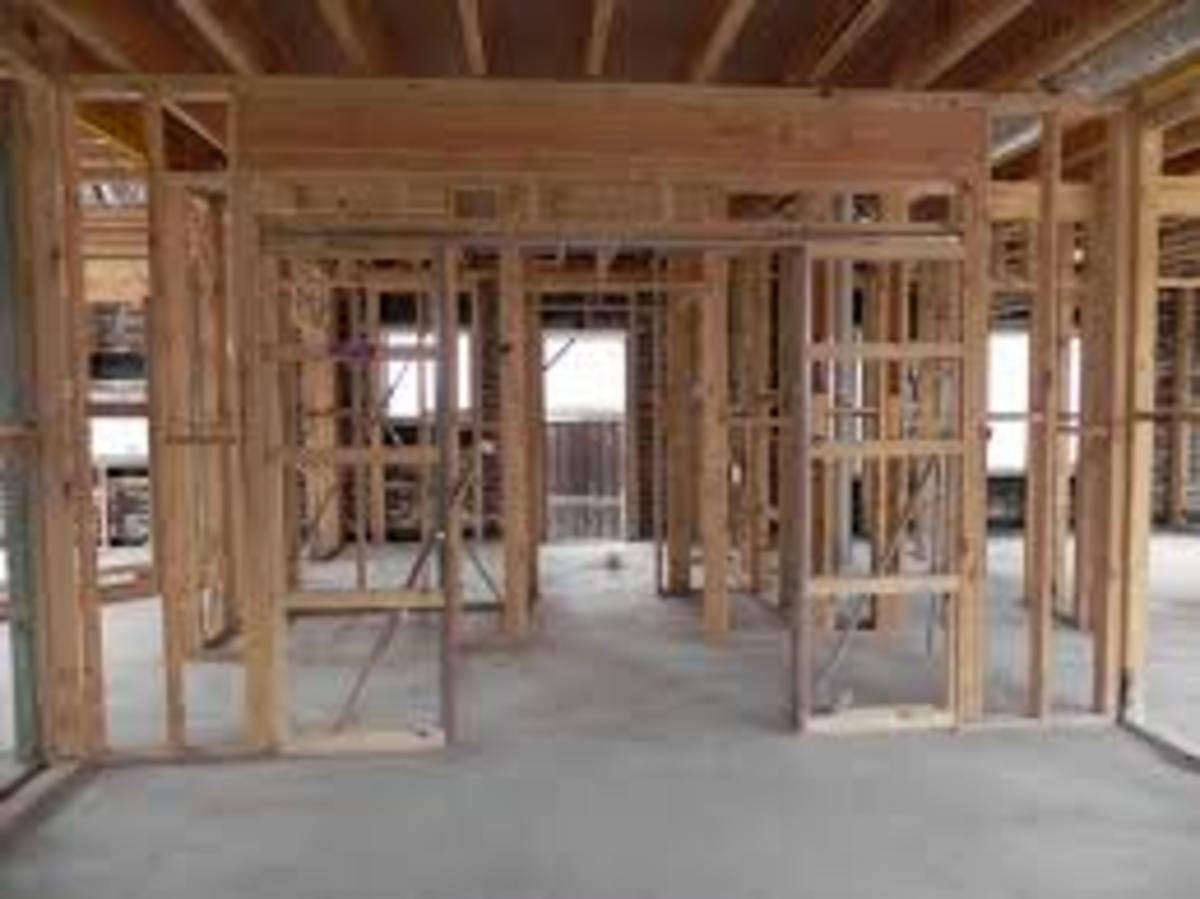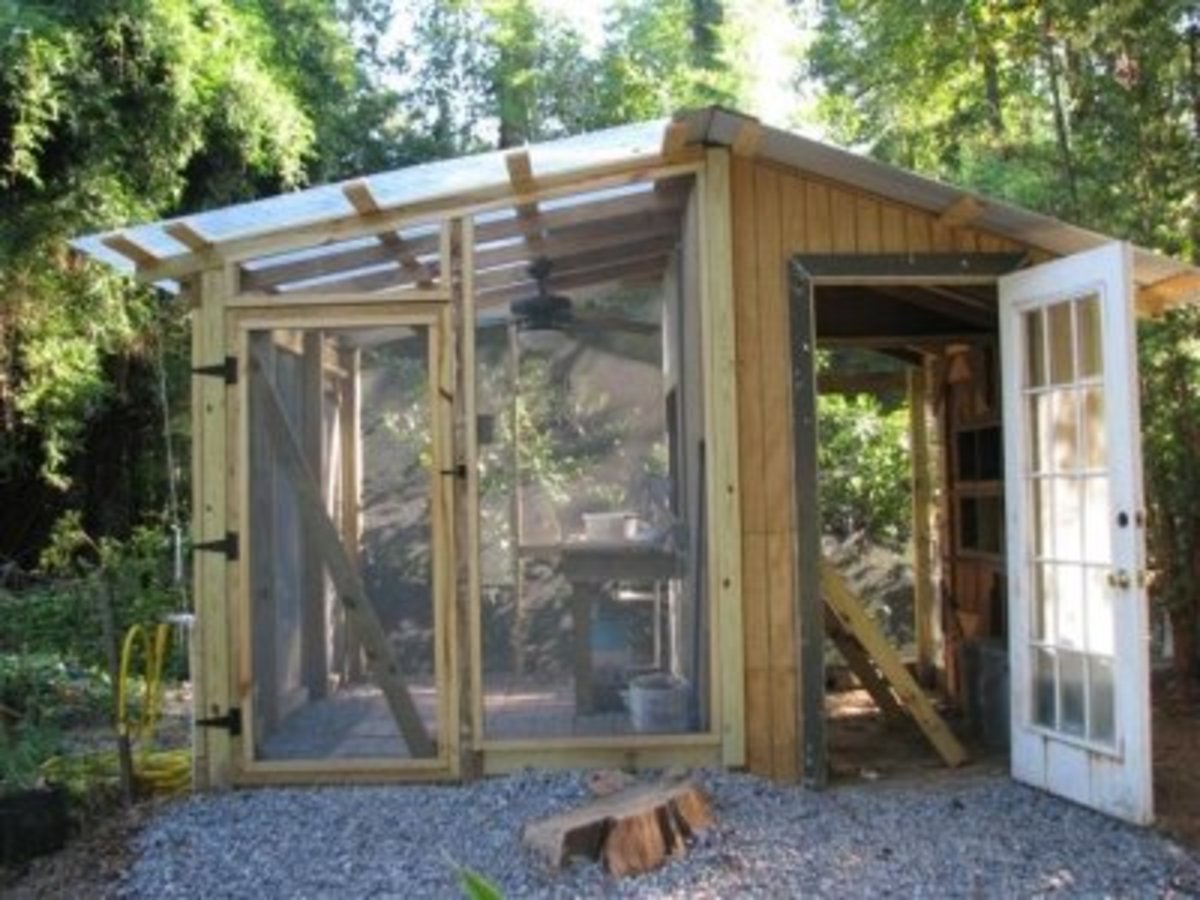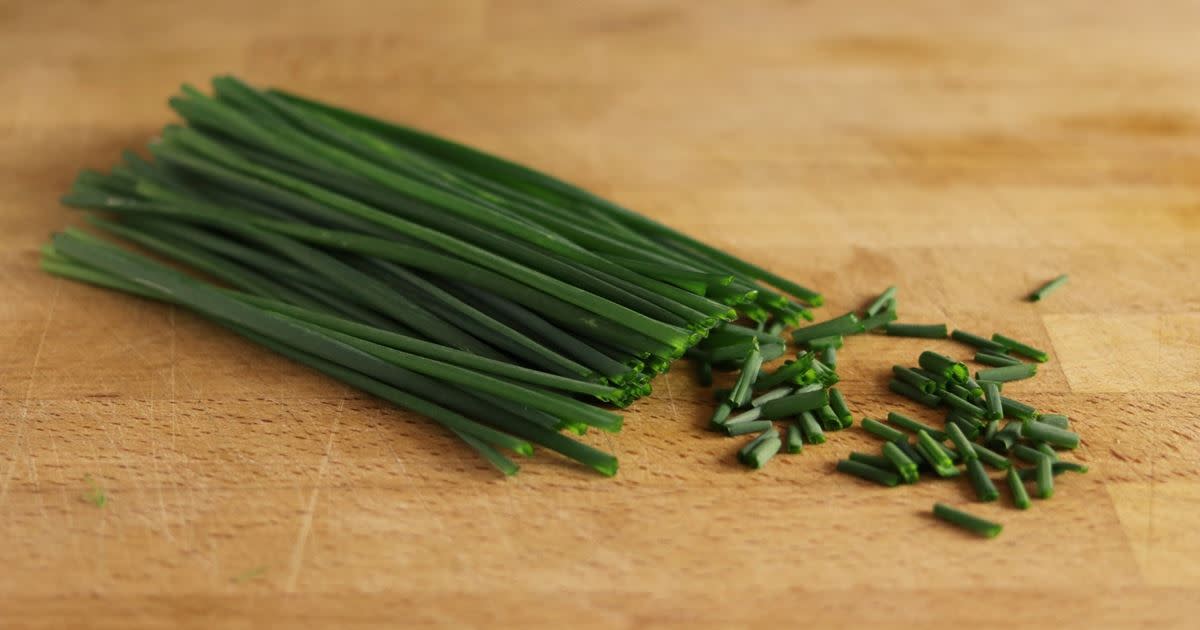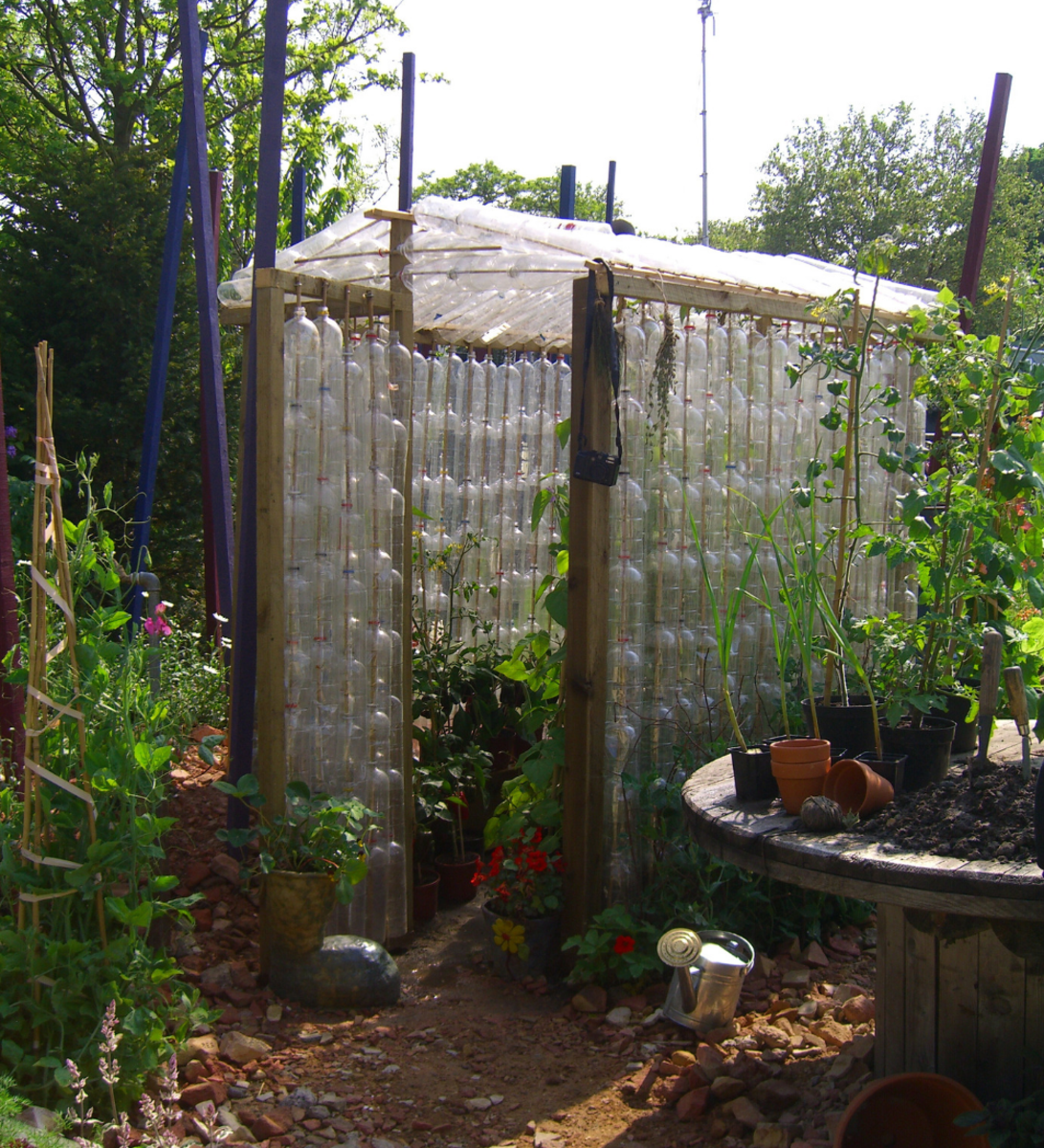How to Build a Cheap Greenhouse
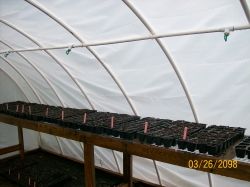
Build a 12x16 Hoop-Style Greenhouse for Under $200
Considering buying a new greenhouse? Greenhouses are quite expensive these days. Even for a small 6x10 greenhouse, you can expect to pay at least $600 if not over $1,000. Anyone with a real gardening passion knows that a 6x10 greenhouse can become crowded in no time. Therefore, the bigger- the better!
I have always loved gardening and always dreamed of having my own greenhouse. Until recently I have never considered putting it into action. Finally, I decided to indulge myself, that is, until I realized how much a greenhouse would cost. Instead, my husband offered to build me a greenhouse. I looked on line for several weeks trying to find a greenhouse plan that we could build ourselves. Still, we were going to spend a fortune. The greenhouse tin (clear plastic sheets), are running about $30 a sheet. Now you do the math on that one!
I came across a few hoop-style greenhouses that used PVC and visqueen. I showed my husband and then realized that we could build a nice size greenhouse for under $200. Below you will find the plans that my husband put together to build me a 12x16 foot greenhouse that has plenty of room!
The Benefits of Using a Greenhouse
Greenhouses have more benefits then just storing your plants for the winter. While buying a greenhouse is expensive, building your own can save your a few grand depending on your preferences. Gardening with a greenhouse can actually help you save several hundred dollars a growing season which will pay for it's self in no time.
One of the main benefits of using a greenhouse is obviously storing plants. Growing plants in a greenhouse helps reduce frost damage and heat damage. By keeping you plants covered during the winter, you can minimize damage while still keeping them cool enough to go dormant. During the summer, a greenhouse will help keep hummidty high so that you plants are nice and cozy while still getting the much needed light without the hard scorch caused by dry heat.
Another great benefit of using a greenhouse is that you can grow your own flowers from seeds and cuttings. Yes, you can do this without a greenhouse, but then you have to worry about space, hummidity, watering, and maintaining efficient light. The money you save growing your own flowers, will quickly help you pay for your greenhouse.
Storage is another key to using a greenhouse. Not only can your store plants inside of a greenhouse, you can also store your other items such as fertilizers, pesticides, gardening tools, and other items you would like to keep protected from the weather. Just remember, it's wet and damp in your greenhouse so a cupboard, storage unit, Rubbermaid container or other storage container is ideal if you do plan on storing these items in the greenhouse.
What You Need to Build The Greenhouse
9- 3/4in x 20ft PVC pipe
27- Pipe Brackets (found in the plumbing or electrical deparments)
3- 2 x 4 x 16 ft boards
6- 2 x 4 x 12ft boards
1- Roll of 20 x 100 ft, 6 mil or higher Visqueen (or Poly Sheeting)
If you can find can find it in 20 x 50ft rolls then by all means, get that. We looked everywhere and couldn't find no less then 100ft which runs around $89.
2- Hinges
1- Door Handle
1- Door Latch
(If you have an old screen door or other door, skip these materials and use the door you already have to save money.)
Box of Screws
Skill Saw
Staple Gun with Staples
Preparing the Site For Your Greenhouse
This simple, inexpensive greenhouse only takes about 3 hours to build, not counting the floor preparation plans. Once you have all you supplies together you are ready to get started.
Start by preparing your ground. Remove all grass, weeds stumps, and other vegetation from the area. I would clear at least a 13 x 17 area to allow a 1ft border aroundthe greenhouse. You can also till everything in and rake out the loose materials, this will be easier, but your soil will be softer. Once you have all the vegetation out, even the soil so that it's as even as possible. This will help insure that your greenhouse is level.
Building the Frame for your Greenhouse
Once you have your site prepared, you can begin assembling the frame. Start by taking 2- 12ft and 2- 16 ft boards and laying them out into a square with the 16 footers as your side and the 12 footers as your front and back. Line them up, make them flush and screw them together. You should now have a large rectangle that is nice and sturdy.
Check around the perimeter and make sure that they are flush with the ground. Fill in or cut down and uneven spots. Make sure the frame is sitting nice and flat.
You are now ready to begin setting your PVC frame. First, check to see if your PVC pipes have the 2 inch fitting on the end. If they do cut them, it's only going to take away an inch or two so there is no need to worry. Once you have the end cuts, using a tape measure, mark of 2 ft sections on the side boards. The first or last section will be about 1-2 inches shy of a full 2 ft section. If that bothers you simply mark the other sections at 19 1/2 inches. You will never notice, I promise.
Once you have your sections marked, start at either the front or back and work you way up, setting the PVC pipe. Start on either the left or right side, and work you way up. Screw a bracket in the middle of the board on each mark line. There should be a total of 9 brackets with 8 sections.
Once you have all the brackets on one side completed, add a piece of PVC pipe and bend it all the way over the greenhouse to the other side. It's really helpful if you have someone to assist you. Once you have it bent over, secure that end with a bracket as well. Make sure you pipe ends are flush with the bottom of the board. Continue this until you have all your pipes secured to the frame.
Greenhouse Gardening Books
Greenhouse Flooring Ideas
Since you are obviously on a budget if your looking for inexpensive ways to save on building a greenhouse, then you probably don't have a lot to spend on the flooring. The flooring can actually be one of the easy tasks in building the greenhouse.
There are several option abailable to meet any budget or style. Here are some of the most common options for flooring your greenhouse.
Mulch:
Mulch the entire bottom of the greenhouse. Feel free to use the cheap mulch as you really won't need it to serve much purpose other then flooring. Spread it evenly throughout the floor surface. You may want to put a weed mat down before mulching, but weeds shouldn't be a problem since you will be removing vegetation before you begin. Simply spot-shot the weeds the pop up!
One nice benefit to using mulch is that it keeps you raised up out of puddles while allowing the water to soak into the ground and there is no sweeping needed!
Brick Pavers:
Brick Pavers are a nice way to floor the greenhouse. They will last forever and you don't require replacing. Unfortunately, they can be very expensive.
Another thing to consider with brick pavers is that you may have puddling water. Which can lead to slick surfaces. If you are looking for the nice appeal and want to avoid the water taking over, use mulch for the greenhouse bottom and line your walkways with brick pavers!
Sands:
Sand (or a dirt bottom) is a nice way to floor your greenhouse. It helps keep the walking area dry and non-slick. Just be sure that the sand or dirt you use is is clean. The last thing you want to do is feel your greenhouse full of bacteria before you ever get started.
Rocks or Gravel:
Rocks or gravel will make a nice, well drained greenhouse floor as well. Again, they may become slick if not kept clean so another option to add to the rocks or gravel is to do a walkway in brick pavers.
Weed Mats:
Weed mats or weed liners also make great flooring. When I took horticulture, all of greenhouses were simply floored in 2 layers of black weedmat that was ran from one end to the other and stapled. It worked very well and held up for a few years at the time, even with the high traffic.
How Long Will the Greenhouse Frame Last?
You can expect the frame to last 10-12 years. The PVC is pretty durable. We spent the extra 64 cent per piece to get a better grade. Since you only need 9 pieces I would suggest you do the same. That's only a $5 difference!
How Long Will the Visqueen (or Poly Sheeting) Last?
Depending on your location, (and the mil you go with) the visqueen should last 1-3 years. Here in Florida I'm shooting for 2 years! Anything over that will be a bonus. I'm sure it will be fine but after 2 long summers you never know.
I stongly suggest you stick with the 6 mil. This will help insure a longer lasting cover as well as more protection. The thin stuff will be cheap and more budget friendly now, but replacing it ever year will not be. Seriously, go with the 6 mil or higher.
Since we could only find 100 foot rolls for $89, I will have plenty left over. I am actually considering double-layering the poly sheeting to make it more durable. Not to mention, I will still have enough left over for the next replacement as well.
How to Save Even More Money With This Greenhouse
Looking save even more money or still in a tight fit with your gardening budget. Here are a few ways to save even more money when building this greenhouse.....
You can save $10-15 if you have an old door, sceen door or other type of door that you can substitute.
You can save $89 if you already have visqueen or no someone that is willing to get rid of what they have. Since the smallest rolls we could find were 100 ft long we will have enough to double layer, and replace it in a few years. Not bad at all but if you are in a budget crunch, that $89 could put you right where you need to be.
If you have some old lumber lying around that is still in good shape, use it. You can cut it down as needed, to make it fit. Be sure that you keep the base boards in 2x 's to insure they are durable. 2 x 6's are a great substitute. That will only make them stronger!
Instead of buying 1 x 's, you can rip down old lumber pieces in to thin strips that can be used to line the visqueen. Just make sure they are still thin enough but yet durable and will hold up as long as your visqueen does.
What Do You Think Of The 12x16 Hoop-Style Greenhouse for Under $200
Post your comments, stories and ideas for the greenhouse here for others to see!


